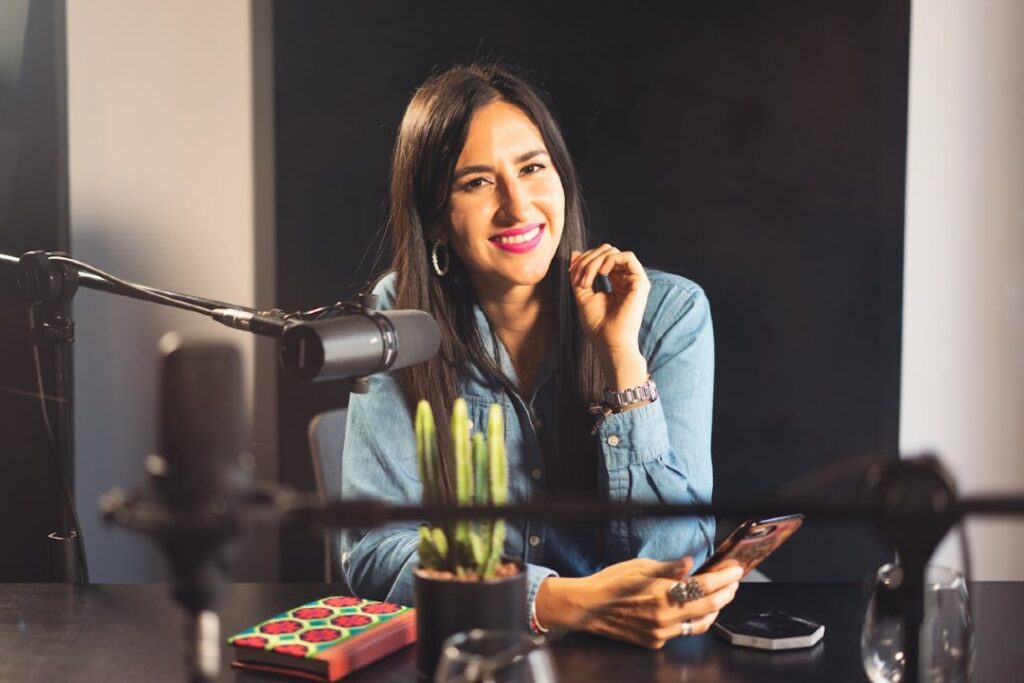Podcasting has gained popularity due to its accessibility, convenience, and diversity. Anyone with a microphone and internet can create a podcast, lowering barriers to entry. Listeners enjoy on-demand, niche content they can consume anytime, anywhere—while commuting, working, or relaxing. The variety of topics, from true crime to self-improvement, caters to specific interests, unlike traditional radio. Intimate, authentic storytelling and host-listener connection foster loyalty. Affordable production, easy distribution through platforms like Spotify, and growing advertiser interest (with podcast ad revenue projected to hit $4 billion by 2025) further fuel its rise.
Starting a podcast and monetizing it involves strategic planning, consistent effort, and leveraging multiple revenue streams. Below is a concise guide to get you started and generate income:
1. Plan Your Podcast
Choose a Niche: Select a specific topic you’re passionate about and that has an audience (e.g., true crime, personal finance, tech). Research competitors to find a unique angle.
Define Your Audience: Understand who you’re targeting (age, interests, location) to tailor content and marketing.
Name and Branding: Pick a memorable name and create professional cover art (use tools like Canva or hire a designer).
Format and Frequency: Decide on episode length (20–60 minutes is common), format (solo, interviews, storytelling), and release schedule (weekly or bi-weekly).
2. Set Up Your Podcast
Equipment: Start with a budget-friendly setup:
- Microphone: USB mics like Audio-Technica ATR2100x ($99) or condenser mics like Rode PodMic ($100).
- Headphones: Sony MDR7506 ($80–100).
- Software: Free options like Audacity or GarageBand; paid options like Adobe Audition ($20/month).
- Optional: Pop filter, mic stand, and soundproofing for better audio.
Recording Space: Use a quiet room with minimal echo (closets or soft furnishings help).
Hosting Platform: Choose a podcast host like Buzzsprout ($12–24/month), Libsyn ($5–20/month), or Anchor (free, now Spotify for Podcasters) to store and distribute episodes.
Editing: Learn basic editing (cut noise, add intros/outros) or hire an editor via Fiverr ($20–100/episode).
3. Create and Launch Content
Record Episodes: Plan 3–5 episodes for launch to hook listeners. Include an intro episode explaining your podcast’s purpose.
Edit and Publish: Add music (use royalty-free tracks from Epidemic Sound or AudioJungle) and upload to your hosting platform.
Distribute: Submit to directories like Apple Podcasts, Spotify, Google Podcasts, and Amazon Music via your host’s RSS feed.
Promote: Share on social media (X, Instagram, TikTok), create audiograms (short video clips of episodes), and engage in relevant online communities.
4. Grow Your Audience
Consistency: Stick to a regular release schedule.
Engage Listeners: Use X to interact, ask for feedback, and share behind-the-scenes content. Create a website or landing page (via Wix or Linktree) for show notes and listener interaction.
Guests and Cross-Promotion: Invite guests with their own audiences and appear on other podcasts.
SEO and Discoverability: Use descriptive episode titles and show notes with keywords to improve search rankings.
5. Monetize Your Podcast
You typically need 1,000–5,000 downloads per episode to attract significant monetization opportunities, but you can start earlier with some methods. Here are key strategies:
Sponsorships and Ads:
- Join ad networks like AdvertiseCast or Podcorn (typically $10–50 CPM, cost per mille/thousand downloads).
- Pitch local businesses or niche brands directly once you have 500+ downloads/episode.
- Record host-read ads for authenticity (listeners trust your voice).
Affiliate Marketing:
- Promote products/services relevant to your niche (e.g., Amazon Associates, ClickBank).
- Include affiliate links in show notes or mention discount codes. Earnings vary ($0.50–$100/sale).
Crowdfunding/Patronage:
- Use platforms like Patreon or Buy Me a Coffee for listener donations ($5–20/month from supporters).
- Offer perks like bonus episodes or merch for patrons.
Premium Content:
- Sell ad-free episodes, exclusive content, or courses via Patreon or Substack ($5–15/month).
Merchandise:
- Sell branded items (T-shirts, mugs) via Printful or Teespring once you have a loyal audience.
Live Events or Workshops:
- Host live podcast recordings or virtual workshops (ticket prices: $10–100).
Sell Your Own Products/Services:
- Use your podcast to promote your coaching, consulting, or digital products (e.g., eBooks, courses).
6. Track and Optimize
Analytics: Use your hosting platform’s dashboard to track downloads, listener demographics, and episode performance.
Feedback: Monitor reviews on Apple Podcasts and comments on X to improve content.
Experiment: Test different monetization methods and episode formats to see what resonates.
Costs to Consider
Initial setup: $150–500 (mic, headphones, software, hosting).
Ongoing: $10–50/month (hosting, music subscriptions, optional editing).
Marketing: $0–100/month (social media ads, promo materials).
Timeline to Profit
0–3 months: Focus on content creation and audience building (minimal revenue).
3–6 months: Start affiliate marketing or crowdfunding with 500–1,000 downloads/episode.
6–12 months: Secure sponsorships with 1,000–5,000 downloads/episode ($50–250/episode).
1+ year: Scale with premium content, merch, or events as your audience grows.
Tips for Success
Quality Matters: Invest in good audio and compelling content to retain listeners.
Network: Connect with other podcasters on X or at events for collabs and tips.
Patience: Building an audience takes 6–12 months; focus on value first, monetization second.



